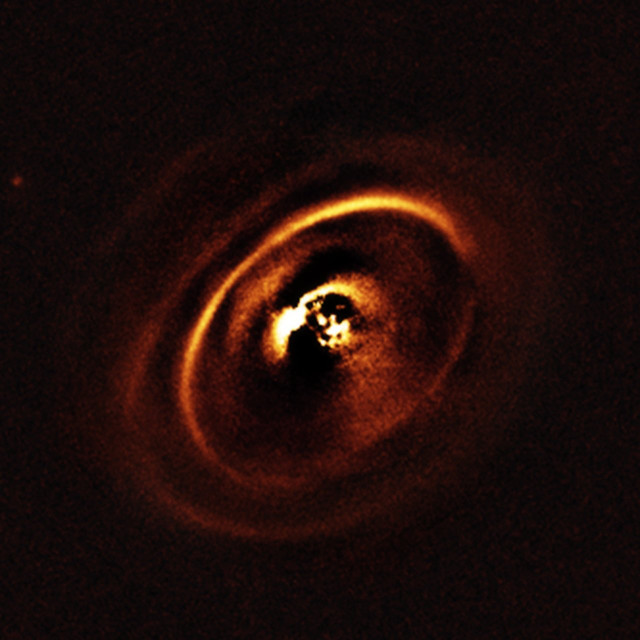
Three articles accepted for publication in the journal “Astronomy and Astrophysics” describe as many research on star systems in formation. The research were conducted by different teams of astronomers but have in common the use of the SPHERE instrument mounted on ESO’s VLT (Very Large Telescope), which revealed details never seen before of protoplanetary discs around the young stars RX J1615, HD 97048 and HD 135344B.
The SPHERE (Spectro-Polarimetric High-contrast Exoplanet REsearch) instrument was activated in June 2014. It’s above all an exoplanet hunter but it can also take direct images of protoplanetary discs around young stars where new planets are forming.
In recent years, thanks to increasingly sophisticated instruments, astronomers are studying a number of star systems in formation to fully understand their mechanisms. In particular, it’s possible to study the interaction between the discs and the growing planets, with the various forms it may take: large rings, spiral arms or voids in the shadow.
The team led by Jos de Boer of Leiden Observatory in the Netherlands, found a complex system of concentric rings surrounding the young star RX J1615, which is about 600 light years from Earth. This system has an age estimated at about 1.8 million years, a little more than a baby in astronomical terms. The protoplanetary disc, that in some ways looks like a giant version of Saturn’s rings, shows the signs of the effects produced by the planets that are forming.
The team led by Christian Ginski, again of Leiden Observatory, observed the young star HD 97048, about 500 light years from Earth. A meticulous analysis allowed to verify that there are also concentric rings in this star’s protoplanetary disc. The symmetry in this and the RX J1615 system is surprising because in most cases there are asymmetric spiral arms. These new discoveries led to a considerable increase in the number of known systems with symmetrical rings.

The team led by Tomas Stolker of the Anton Pannekoek Institute for Astronomy, in the Netherlands, examined a protoplanetary disc of a type more common but no less spectacular. This is the disc surrounding the star HD 135344B, about 450 light years from Earth. This system was already studied in the past but the SPHERE instrument made it possible to detect new details. The wide central cavity and the two structures in the spiral arms may have been created by one or two protoplanets that will become gas giants.
In the HD 135344B system there are four dark streaks that look like shadows cast by the materials that move in the disc that spins around the stars. The various observations made in different periods allowed to see changes in one of the streaks, an evolution of a protoplanet that’s happening in real time in an event that until now astronomers had rarely observed.
The SPHERE instrument is just one used recently for the study of protoplanetary discs and planets in formation. Other instruments were built to detect different electromagnetic wavelengths, for example radio telescopes such as ALMA. The various research projects of recent years are providing valuable data to understand the early stages of planets life.



Permalink
Permalink